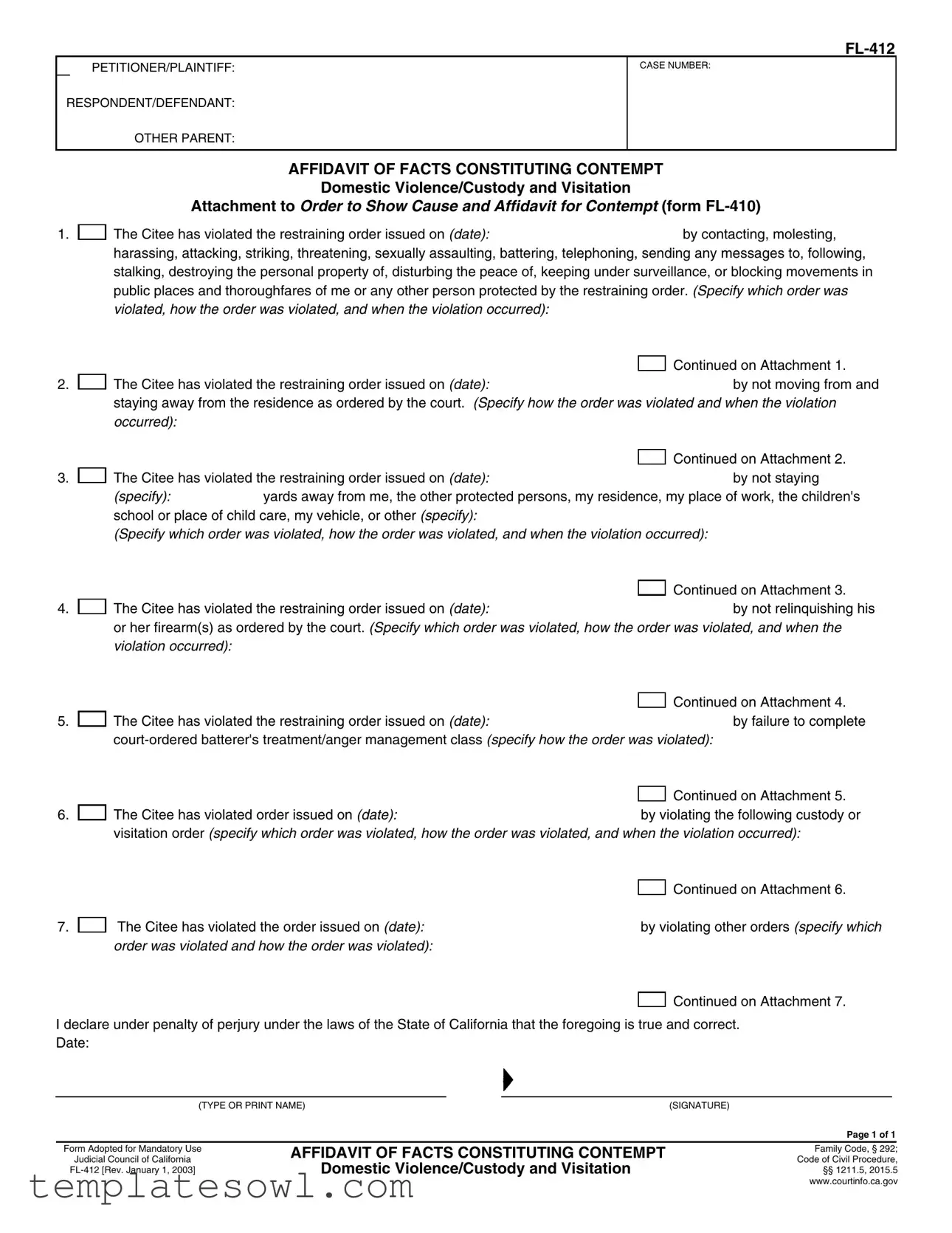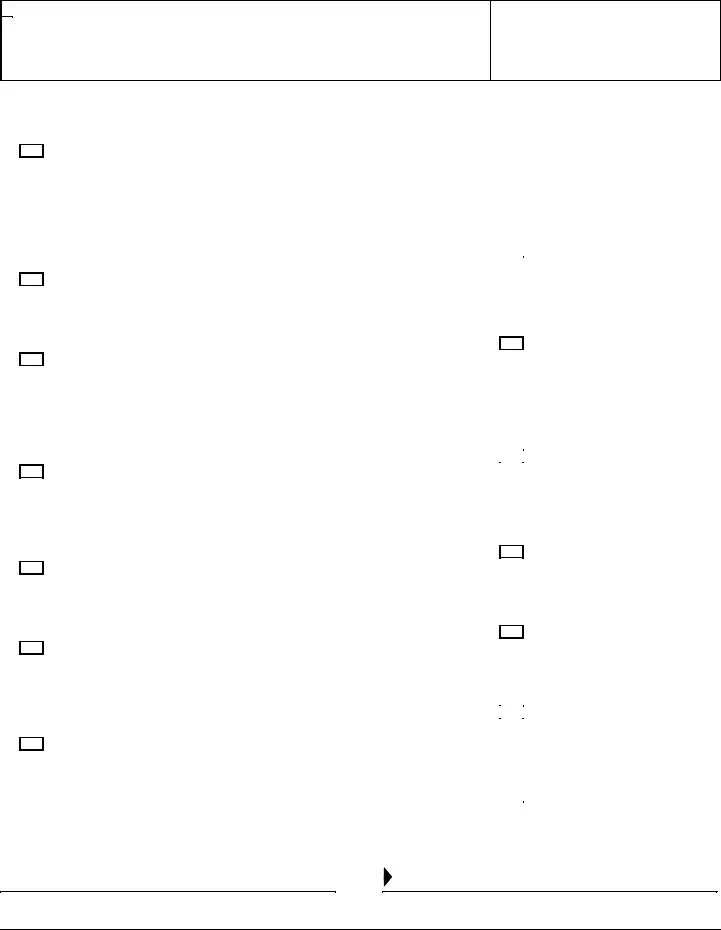What is the FL-412 form used for?
The FL-412 form, also known as the Affidavit of Facts Constituting Contempt, is primarily used in California to document violations of court orders related to domestic violence, custody, and visitation. When a party believes that the other has failed to comply with a restraining order or other court orders, they can use this form to formally report those violations. This process serves to initiate contempt proceedings, allowing the aggrieved party to seek enforcement of the court's decisions.
Who can file an FL-412 form?
Any individual who is a party to a court order can file the FL-412 form. This usually includes the petitioner or plaintiff, as well as the respondent or defendant in a domestic violence and family law context. The form is specifically designed for those who have been protected under a restraining order to assert that the other party has breached the terms set forth by the court.
What information must be included in the FL-412 form?
The FL-412 requires detailed information regarding the violations of the court orders. Parties must specify the exact order that was violated, describe how the violation occurred, and provide the date when the violation took place. It is important to be accurate and thorough, as this information supports the request for contempt and potential enforcement actions by the court.
What happens after the FL-412 form is filed?
Once the FL-412 form is filed with the court, a hearing will generally be scheduled to address the alleged violations. The other party, known as the citee, will be notified and given an opportunity to respond. Depending on the circumstances and evidence, the court may find the citee in contempt, enforce the original orders, impose penalties, or take other necessary actions to ensure compliance.
Can I represent myself when filing an FL-412 form?
Yes, individuals have the right to represent themselves in court proceedings, including when filing an FL-412 form. However, navigating legal processes can be complex. Therefore, even if self-representation is an option, many find it beneficial to seek legal advice or assistance to ensure that all necessary procedures are followed correctly and effectively.

